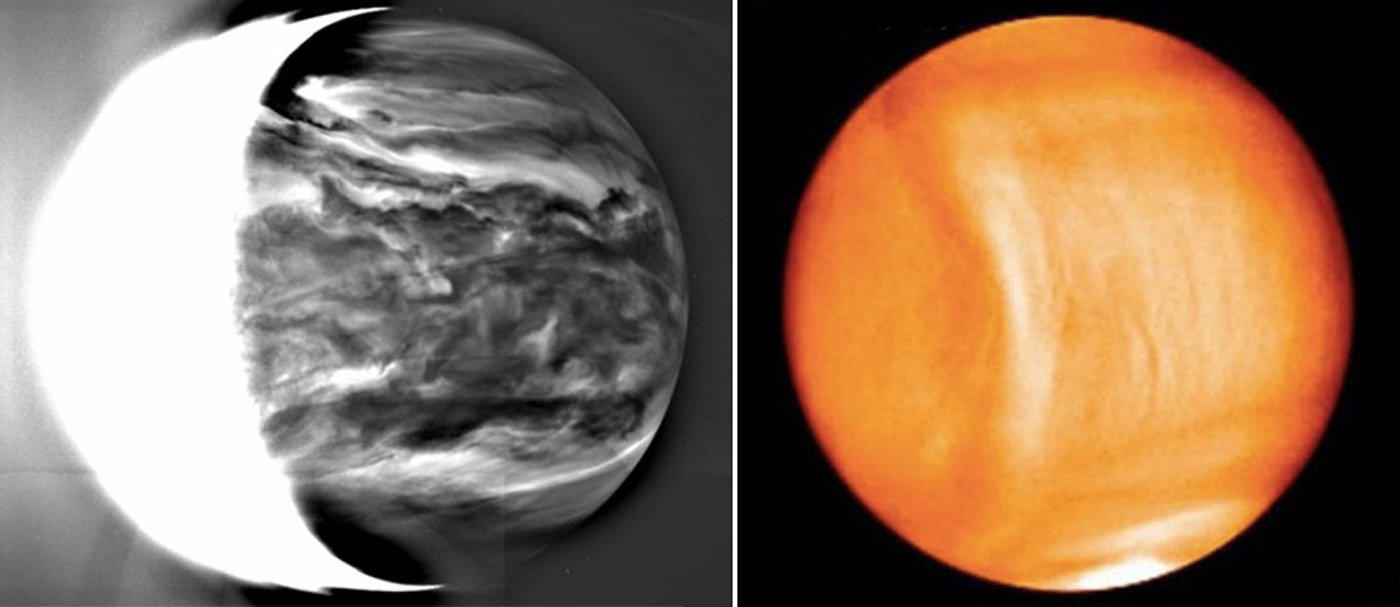


What kinds of discoveries have been made from these images?
The thing that we scientists are most excited about are the images taken by the mid-infrared camera. Looking at these images, which capture the temperature distribution of Venusian clouds, we can see a bow-like white pattern from the northern hemisphere to the southern hemisphere, straddling the equatorial area. The white coloring shows areas where temperatures are high. High-speed winds of 400 km/h blow from east to west on Venus, so we can see the streaks from east to west, but how a band structure can run from north to south is a puzzle. We never imagined that we would see this kind of thing.
Images that are taken with the ultraviolet imager have also shown us aspects of Venus that we had never seen before. This is the first time we have imaged Venus with the ultraviolet wavelength that allows us to see sulfur dioxide. Ultraviolet rays from the Sun cause a chemical reaction, and the sulfur dioxide in the atmosphere changes into sulfuric acid. This is the origin of the sulfuric acid clouds that cover the planet, but we don’t know where and how this sulfur dioxide is carried to the top of the clouds. As we continue our analysis of these images, we hope to understand how the sulfuric acid clouds are created, and why the planet is covered with them. Personally, I am very interested in this.
In addition, the images captured by the near-infrared camera are very interesting. From these images, we can see that the clouds are low at the north and south poles, but high near the equator. This large-scale difference of elevation is overlain with striped pattern from east to west. This striped pattern may be caused by the super-rotation, which blows from east to west, but it is a mystery why clouds should be higher or lower depending on location. So even these initial observation images are giving us one piece of new information after another. So we are delighted! At the moment, we are taking only still images, but starting April we will be recording the first ever video of the movements of the atmosphere and clouds of Venus. I think after that our understanding will progress in leaps and bounds.

